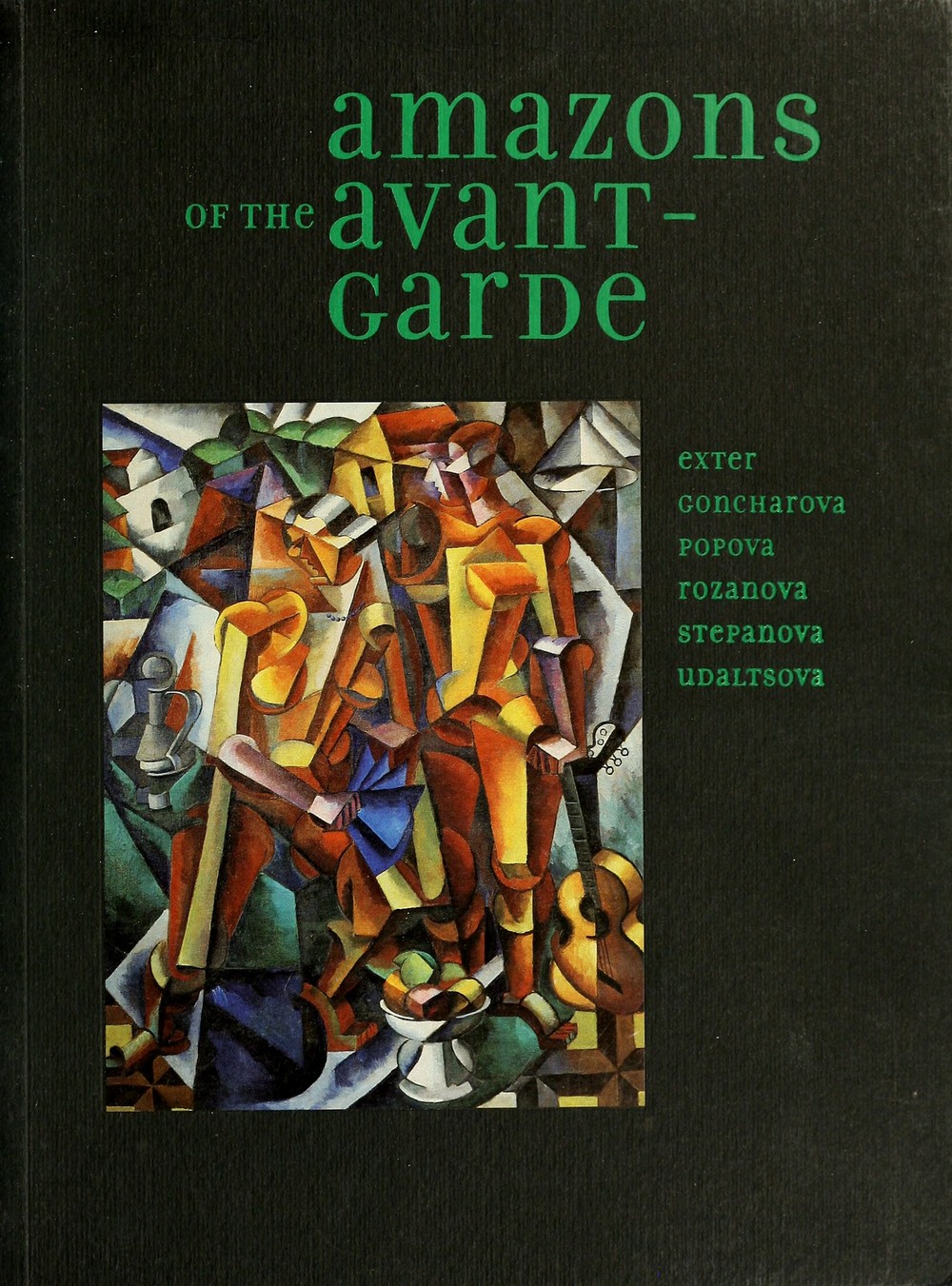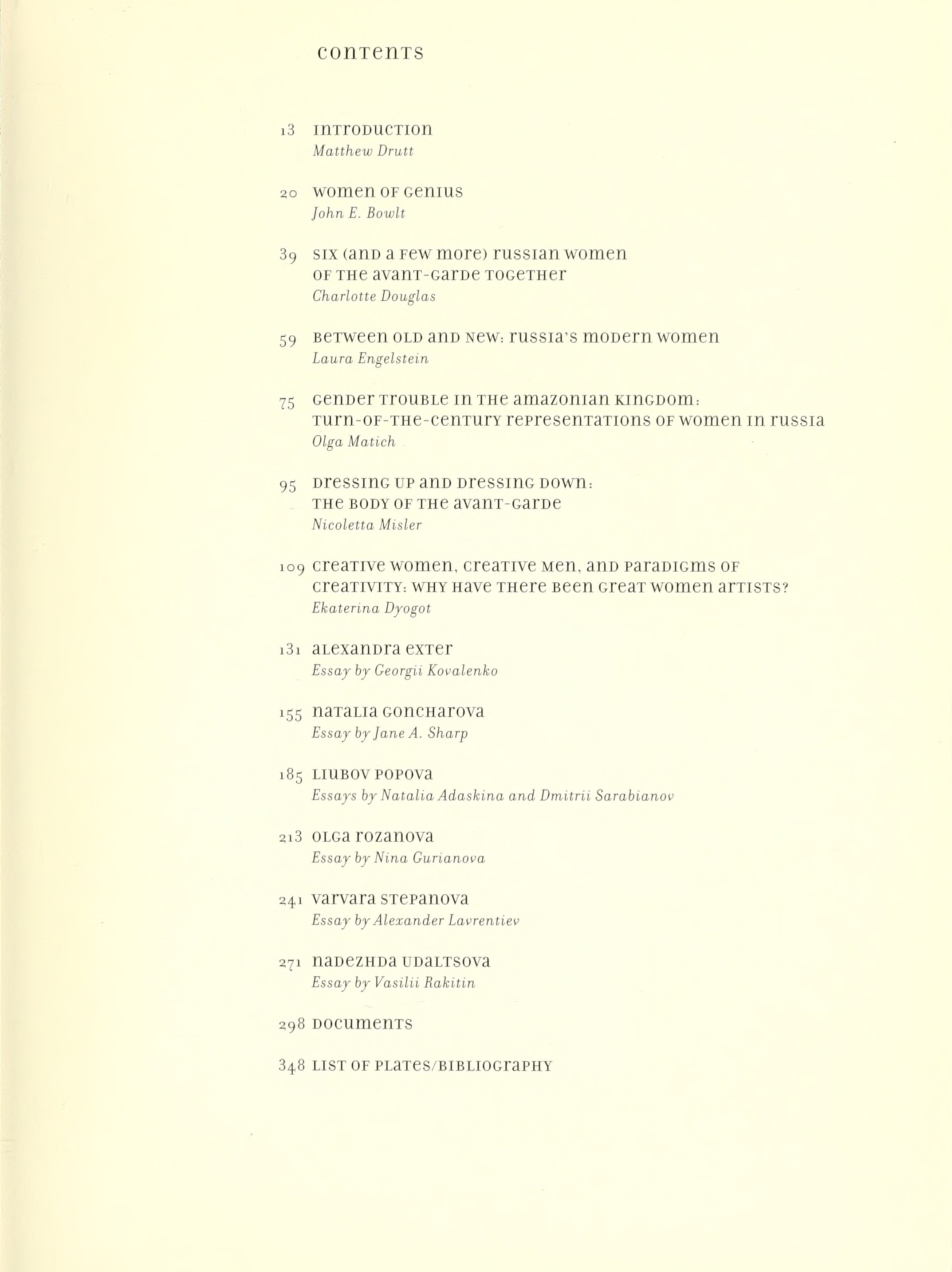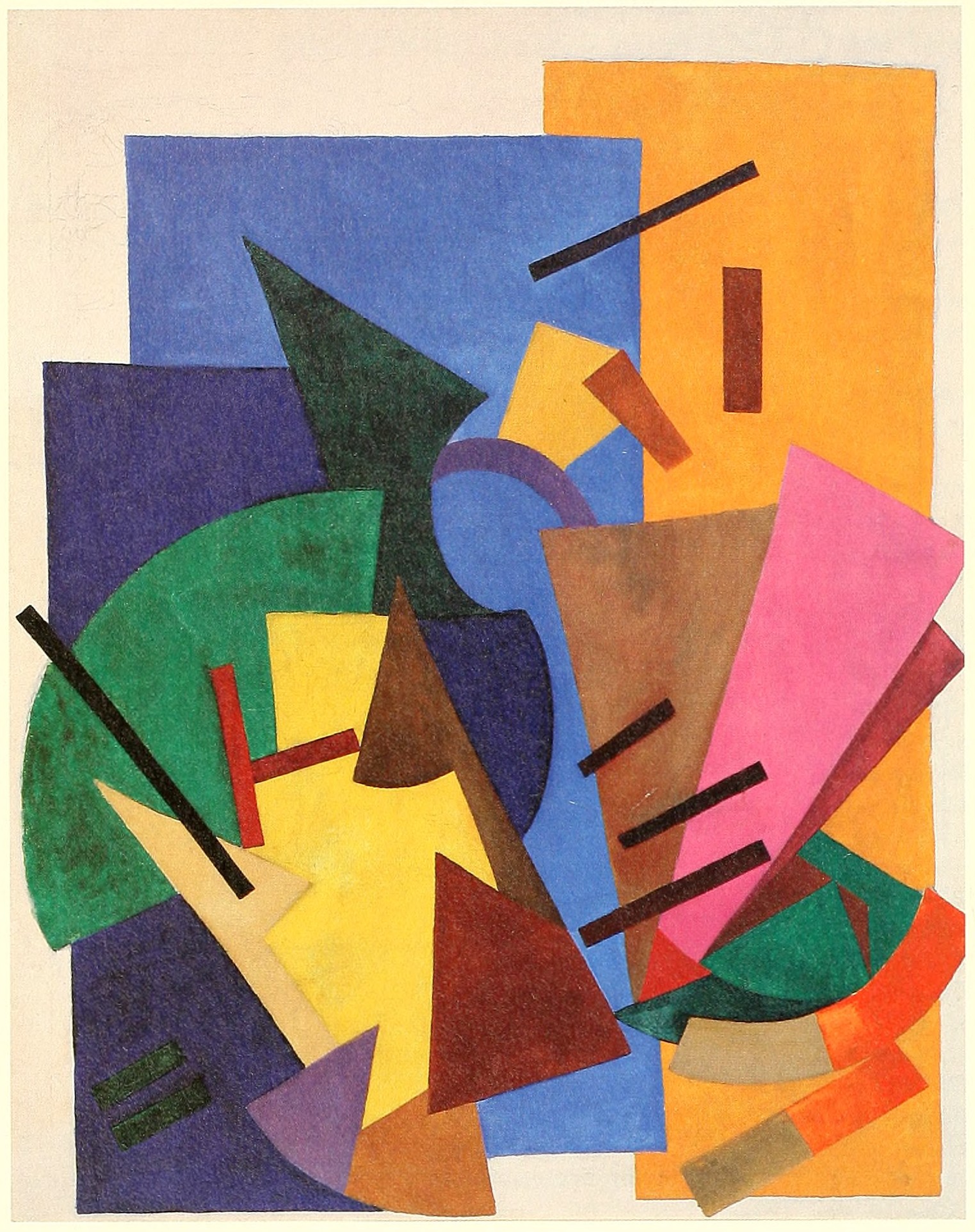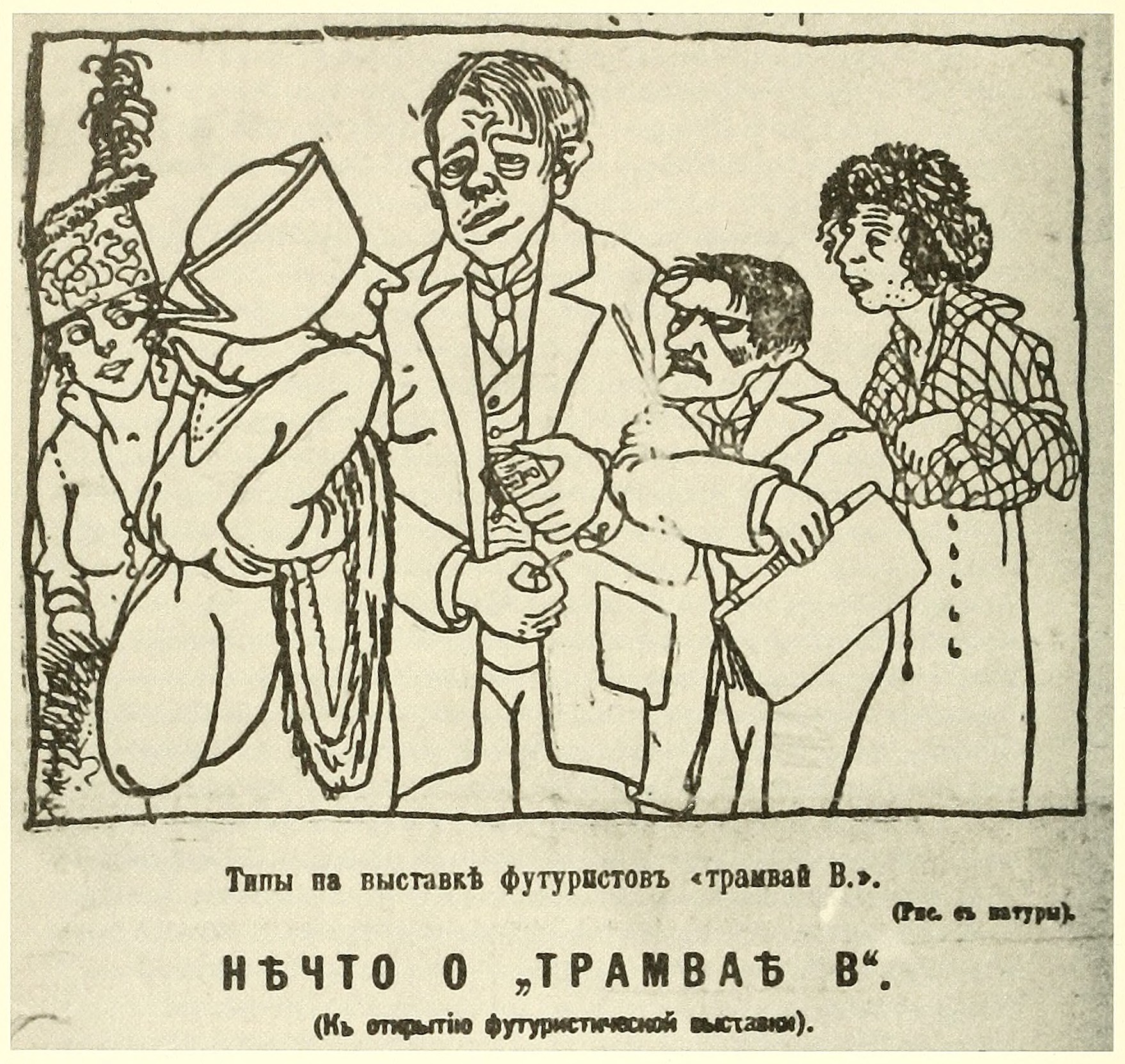|
|
Amazons of the avant-garde: ALexandra Exter, Natalia Goncharova, Liubov Popova, Olga Rozanova, Varvara Stepanova, and Nadezhda Udaltsova. — New York, 2000Amazons of the avant-garde: ALexandra Exter, Natalia Goncharova, Liubov Popova, Olga Rozanova, Varvara Stepanova, and Nadezhda Udaltsova / Edited by John E. Bowlt and Matthew Drutt. — New York : Solomon R. Guggenheim Museum, 2000. — 366 p., ill. — ISBN 0-89297-225-3
CONTENTS
13 INTRODUCTION
Matthew Drutt
20 WOMEN OF GENIUS
John E. Bowlt
39 SIX (AND A FEW MORE) RUSSIAN WOMEN OF THE AVANT-GARDE TOGETHER
Charlotte Douglas
59 BETWEEN OLD AND NEW: RUSSIA’S MODERN WOMEN
Laura Engelstein
75 GENDER TROUBLE IN THE AMAZONIAN KINGDOM: TURN-OF-THE-CENTURY REPRESENTATIONS OF WOMEN IN RUSSIA
Olga Matich
95 DRESSING UP AND DRESSING DOWN: THE BODY OF THE AVANT-GARDE
Nicoletta Misler
109 CREATIVE WOMEN, CREATIVE MEN, AND PARADIGMS OF CREATIVITY: WHY HAVE THERE BEEN GREAT WOMEN ARTISTS?
Ekaterina Dyogot
131 ALEXANDRA EXTER
Essay by Georgii Kovalenko
155 NATALIA GONCHAROVA
Essay by Jane A. Sharp
185 LIUBOV POPOVA
Essays by Natalia Adaskina and Dmitrii Sarabianov
213 OLGA ROZANOVA
Essay by Nina Gurianova
241 VARVARA STEPANOVA
Essay by Alexander Lavrentiev
271 NADEZHDA UDALTSOVA
Essay by Vasilii Rakitin
298 DOCUMENTS
348 LIST OF PLATES / BIBLIOGRAPHY
OLGA ROZANOVA
Non-Objective Composition (Flight of an Airplane), 1916
Oil on canvas, 118×101 cm
Art Museum, Samara
PREFACE
THOMAS KRENS
The Guggenheim Museum has a distinguished history in collecting and presenting the art of the Russian avant-garde. In 1929, Solomon R. Guggenheim met Vasily Kandinsky in his Bauhaus studio, beginning a relationship that would result in this pioneering Russian abstract painter becoming closely associated with the museum’s permanent collection. Masterpieces by Russians Marc Chagall, Natalia Goncharova, Mikhail Larionov, El Lissitzky, and Kazimir Malevich were acquired by the museum early on, and remain some of our most treasured works.
Over the years we have mounted many exhibitions devoted to Russian artists, with no fewer than nineteen since 1945 devoted to Kandinsky alone. Other Russian masters honored by the Guggenheim include Malevich (1973), Chagall (1975 and 1993), and Naum Gabo (1986). In 1981, the Guggenheim organized Art of the Avant-Garde in Russia: Selections from the George Costakis Collection; a sweeping survey, it resulted in two publications that remain central to the scholarship on the subject. In 1992, we presented The Great Utopia: The Russian and Soviet Avant-Garde, 1915—1932, which remains the most comprehensive investigation of the subject to date.
It is within this context that we are pleased to organize another historic exhibition of Russian art. Amazons of the Avant-Garde is a model of scholarship and curatorial acumen. It brings together distinguished masterpieces of the period, including many not shown in the West since they were created. This is the first traveling exhibition organized for the Deutsche Guggenheim Berlin. Following Berlin and the Royal Academy, the presentation of the exhibition at the Peggy Guggenheim Collection offers an ideal setting for understanding the achievements of these artists against a background of works by other Russians as well as by the Parisian Cubists in Peggy Guggenheim’s collection, and by the Italian Futurists, magnificently represented in the Gianni Mattioli Collection.
Curators John E. Bowlt, Matthew Drutt, and Zelfira Tregulova deftly organized this project, and I am grateful to them for their cooperation and hard work. We are indebted to the lenders to this exhibition, not only because they allowed us to borrow their treasured works, but because they have made important contributions to the scholarship of this publication. Finally, I am deeply grateful to Dr. Rolf-E. Breuer, Spokesman of the Board of Managing Directors of Deutsche Bank, for his ongoing support of the collaboration between our institutions. I am thankful for Deutsche Bank’s enthusiasm for the project as well as its sponsorship of the tour.
figure 1. ANONYMOUS
Types at the "Tramway V" Exhibition of Futurists, caricature published in the newspaper Golos Rusi (Petrograd), 1915.
The drawing shows (left to right) Ksenia Boguslavskaia, Alexandra Exter, Vladimir Tatlin, Ivan Puni, and Olga Rozanova at the Tramway V exhibition.
Courtesy of Puni-Archiv, Zurich.
INTRODUCTION
MATTHEW DRUTT
Amazons of the Avant-Garde is modest in scale yet ambitious in scope. It marks a departure from previous endeavors that have taken a broad view of the Russian avant-garde, mapping the breadth of its interdisciplinary activities through an encyclopedic array of artists.¹ The exhibition celebrates the evolution of modern Russian painting from the 1900s through the early 1920s exemplified by six artists who were at the center of that history: Alexandra Exter, Natalia Goncharova, Liubov Popova, Olga Rozanova, Varvara Stepanova, and Nadezhda Udaltsova. Despite its tight focus, Amazons of the Avant-Garde has been a challenging undertaking. Some five years of planning and research have brought together more than seventy carefully selected paintings and drawings from international public and private collections. Many of the works have been lent by Russian institutions, some appearing in the West for the first time since the early twentieth century.
The narrower path charted by this exhibition is not taken at the expense of the complexity of the art or its milieu. Rather, it allows that complexity to fall under close examination. The present publication is more than a catalogue; it is a collection of interpretive essays and primary documents that delves deeply into its subject and offers a range of viewpoints. New research has concentrated directly on the paintings and drawings. Recause a number of them were originally exhibited without dates and under generic names or simply as "untitled,” questions of provenance have attended many of the works throughout their history. However, after extensive investigation in Russian archives, and with the assistance of colleagues at the different lending institutions, more precise titles and dates have been assigned to several key works. Some of these adjustments represent a subtle refinement of previous scholarship, while others may necessitate a reexamination of a given artist’s stylistic evolution. In cases where questions remain, we have retained the currently accepted information and follow it with a newer suggestion in brackets. This invaluable documentation, along with a careful scrutiny of provenance and exhibition history for each work, has been assembled with the assistance of scholars Faina Balakhovskaia, Liudmila Bobrovskaia, Nina Gurianova, Alexander Lavrentiev, Alla Lukanova, and Tatiana Mikhienko.
The first section of the book consists of six essays on a range of subjects. In some cases, these contributions depart from the subject at hand, offering historical background and insight into topics inspired by this enterprise that make the book an extension of the exhibition rather than merely its companion. How and why such a great number of women artists became so prominent during a relatively confined period are questions that recur throughout this volume. Through an investigation of art criticism, artistic practice, and the art market in early twentieth-century Russia, John E. Bowlt considers the conceptual and historical context in which this question is posed. His essay, "Women of Genius,” reflects on the ambivalence and enthusiasm alternately directed toward female artists in Russia from the turn of the century through the early 1930s. Bowlt also demonstrates that, by the 1910s, the women were quite firmly a part of the Russian art world, and that without them, future avant-garde trajectories would have been impossible. Women artists regularly participated in key exhibitions and wrote for major publications, and in many cases their contributions formed the foundations for pioneering conceptual developments of the period.
In her essay, Charlotte Douglas looks closely at the personal and professional lives of Russian women artists, describing the dynamic of camaraderie and independence that operated between them, their position in the European avant-garde, and their involvement within Russian artistic circles. Douglas reminds the reader that painting was but one facet of their creative output (which also included stage and textile design among other disciplines) and touches upon the complex amalgam of indigenous traditions and foreign influences that informed the art and writings of the six artists.
The roots of their confidence and prominence may be better understood when considered against the intricate historical fabric of Russia. In her essay "Between Old and New: Russia’s Modern Women," Laura Engelstein provides a comprehensive foundation for understanding the social, historical, and political conditions that gave rise to the "new woman" in Russia. The country’s labyrinthine culture and politics are laid bare as the author charts the ebb and flow of female political economy from the eighteenth through the early twentieth century. Engelstein moves deftly between high and low culture, sociology and cultural histoiy, and economics and politics, considering elements as varied as the palace intrigues of the tsarist period to the fashion trends that made women appear more masculine long before the Russian Revolution proclaimed the sexes equal.
Olga Matich’s essay may be viewed as building upon Engelstein’s historical framework. The problematic relationship between power and sexuality — one implicit in the title of this exhibition — is traced through a close reading of Russia’s fin-de-siecle cultural landscape and the question of gender identity. The essay investigates the ways in which women were depicted in the visual, literary, and performing arts, and in particular, how they represented themselves. While primarily concerned with examples from Symbolist art, literature, and theater, Matich’s ideas provide another lens through which the viewer might look at the works in this exhibition. The notion of self-presentation is taken up by Nicoletta Misler in "Dressing Up and Dressing Down: The Body of the Avant-Garde," which examines the impact Exter, Goncharova, Popova, Rozanova, Stepanova, and Udaltsova had on fashion and design. "Dressing Up and Dressing Down" is another reminder that painting was part of a larger ideological and artistic structure, and that significant avant-garde practices of the period went beyond painting.
Finally, Ekaterina Dyogot’s analysis of male and female creativity, and the dynamics of gender, recognition, and exclusion in Modernism, is a sensitive yet pointed discussion of the close personal and professional partnerships that the artists in this exhibition shared with their male contemporaries. Dyogot demonstrates how those relationships presented both means for empowerment and obstacles to the artists’ maintaining their independence.
This volume also includes biographical essays profiling each artist, written by leading scholars — Georgii Kovalenko (Exter), Jane A. Sharp (Goncharova), Natalia Adaskina and Dmitrii Sarabianov (Popova), Nina Gurianova (Rozanova), Alexander Lavrentiev (Stepanova), and Vasilii Rakitin (Udaltsova). These contributions offer critical insight into, and new information about, specific works and shed further light on the artists’ respective biographies. Some adjustments to the chronologies of the artists’ activities have also been made; thus, the information here may in some cases differ from that in previous publications. Such changes have been made only after careful consideration of recently discovered information. The reproductions that follow each of these essays are arranged chronologically; however, this is not meant to suggest that, within a given year, one painting definitely preceded or followed another; and, further, certain works have been arranged according to stylistic considerations.
The final part of the book contains a selection of original writings by the artists themselves. These documents not only provide insight into the critical thinking and aesthetic concerns of each artist, but also reveal their personal struggles, highlighting both their affinities and their fierce competitiveness. While several of these primary sources have previously appeared elsewhere, most have been newly translated from Russian and published here for the first time. Every attempt has been made to preserve the original spirit of these tracts, diary entries, and letters. The polemical writing of the avant-garde demonstrates its support of radical cultural production and provides commentary on the relationship between these artists’ work and the art of the past. These selections are as fascinating, revelatory, and central to the history of the avant-garde as the works of art themselves.
____________
¹. The Great Utopia: The Russian and Soviet Avant-Garde, 1915—1932, organized by the Solomon R. Guggenheim Museum in 1992, has become the exemplar of this approach.
Скачать издание в формате pdf (яндексдиск; 129 МБ).
Издание выложено правообладателем в свободный доступ на archive.org
13 февраля 2015, 18:30
0 комментариев
|
Партнёры
|











Комментарии
Добавить комментарий